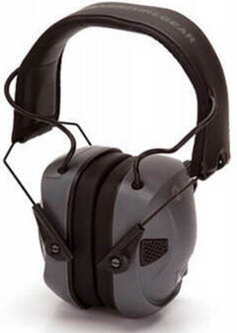How to Reduce Workplace Noise
Noise is inevitable when you’re working with heavy-duty industrial equipment. But exposure to loud noises can lead to permanent hearing loss; these noises don’t have to be deafening to damage a person’s hearing. According to the Centers for Disease Control and Prevention (CDC), workers shouldn’t be exposed to sounds exceeding 85 decibels for eight hours. That’s about as loud as a lawnmower or washing machine.
If workers are exposed to more than 85 dBs of sound for eight hours on a time-weighted average, employers must implement safety measures to prevent hearing loss, as required by OSHA’s Occupational Noise Exposure Standard (29 Code of Federal Regulations (CFR) 1910.95). This includes reducing the noise level and having workers wear the proper hearing protection equipment.
Reducing Noise Levels
Reducing workplace noise is the best way to conserve a person’s hearing. Doing so removes the risk of hearing loss by keeping levels under the CDC threshold. In many cases, reducing the volume by 5% to 10% is all that’s needed to comply with these standards. There are several ways to lower the decibel levels of these sounds. The company can invest in equipment and vehicles that don’t make as much sound as older models.
Workers should avoid being in loud environments unless absolutely necessary. Putting a sound-reducing barrier between the worker and the source of the noise can help to moderate the exposure. Moving loud equipment and processes away from the staff may also be an option. For example, generators and machines may be placed in a sound-deadening chamber. Limiting access to these areas and placing signage near them can help remind workers of the potential risks.
New wireless technology makes it easier for workers to carry out tasks and operate machinery remotely using live video and audio. This allows the person to complete a task in another room or from behind a barrier without physically interacting with the equipment.
Alarms and sensors can also contribute to noise pollution. While these sounds may not be continuous, they can easily reach over 100 decibels. Companies can use visual or vibrating sensors to reduce the alarm volume without negatively affecting response times.
Wearing Hearing Protection
Once these control measures are in effect, the company may need to take additional precautions if the sound level still exceeds the permissible exposure limit.
The next step is to have workers wear adequate hearing protection when working in loud environments. Workers can wear earplugs, earmuffs, and other noise-dampening devices to prevent hearing loss.
For earmuffs, the Pyramex VentureGear AmpBT Earmuff with Bluetooth features 26 decibels of noise reduction to keep exposure under the acceptable threshold. It automatically starts working once sound levels surpass 85 dB, so the worker can still hear in quiet areas. It also comes with an ergonomic design to keep the user comfortable on the job. Hearing protection equipment should be easy to wear without inhibiting the person’s productivity, or workers may be reluctant to use it in the field.
For earplugs, Moldex Pura-Fit 6800 Foam Earplugs are an excellent choice. They offer 33 dB of noise reduction and will stay in place for hours on end without losing their shape. Each box comes with 200 disposable plugs. Workers will need to use a new pair at the start of every shift.
Workers can also use the Howard Leight QB2HYG Hearing Band for hearing loss prevention. It features two foam pods that fit in either ear. The band wraps around the head for a comfortable fit.
Noisy work environments are a danger to employees. Use these ideas and personal protective equipment to keep your team’s hearing protected.
Recent Posts
-
Customizing Gas Detectors: Tailoring Solutions to Fit Your Unique Requirements
In today’s diverse industrial landscape, a one-size-fits-all approach to safety simply doesn’t cu …Jul 3rd 2024 -
10 Ways to Prevent Wildfires
You can prevent wildfires by extinguishing flames before you leave the worksite. Avoid practicing …Jul 1st 2024 -
ANSI/ISEA 138 Safety Gloves: Ensuring Hand Protection
The human hand is an anatomical masterpiece and arguably the greatest tool attached to our bodies …Jun 25th 2024





